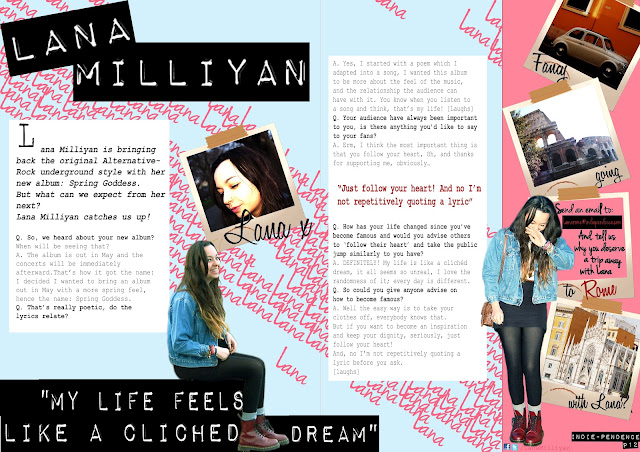How did you attract/address your audience?
During my research stage I sent out a survey specifically to my target audience to research into the style of magazine the preferred etc. in order to attract them to my magazine:
Q1. What Gender are you?
I asked this question in order to know what kind of articles I would include, as well as, colours and organisation. Different genders tend to prefer different designs of magazines. As well as that, it specifically helped me decide whether my featured artist will be male or female. I found out that my target audience ere mostly female hence, I chose, for my artist to be female to attract the audience. I also chose to have certain articles also seen in woman's magazines such as horoscopes.
Q2. What Category Below Includes your age?
The most popular response was '16-18'. This again affects the content of my magazine, and what my articles will be about. For example I have included an article 'Really? Why do you guys like youtube?' this obviously directly addresses my target audience, focusing on them and their interests as young up-to-date teens. The age of my audience, also allows me to choose an artist of the same age, making them feel more personally involved with the artist.
Q3. Which style of Magazine do you prefer?
The most popular response to this question was 'informal and modern'. This essentially moulded the style of my magazine. Based on this question and response from my target audience, I designed the style of my magazine to be more modern, and informal, this involves, the name of the magazine, the font, the layout etc. It also, allowed me to think about not only the articles I would feature but the style of article I would use, and whether it be more formal or informal.
Q4. What colour scheme do you find most attractive?
I asked this question to not only gain some knowledge about my target audience, but also to simply chose a colour scheme first hand, that, ideally they prefer and would be attracted to. The most popular answer was: 'Navy Blues, Light Blues, Lighter shades of Grey and Red'. From this information, I actually chose to use the same colour scheme, but chose to add 'Black' as I thought it suited the colour scheme, and contrasted with Red. I also based on this colour scheme, chose to use an image with the same colours on my contents page.
Q5. What leads you to buy a music magazine?
I asked this question and formulated the response into a wordle. I did this in order to focus on the content of the magazine my target audience are interested in. One of the biggest words on my wordle were 'events' 'information' and 'music' hence, I chose to write two suitible articles: 'Best new up and coming artists of 2012', 'Okay, Seriously, where to be this year?' and 'I'm a fan so you must be? Right?'. This shows how I have considered what types of articles my target audience prefer and how I have directly targeted them through the content of my magazine.
Q6. Are you more attracted to a magazine that in unconventional?
I chose to ask this question as it is depended upon for the design of my magazine. It affected particularly the font, the colour scheme, even, the name of my magazine. The response being: 'yes, to some extent'. This meant when creating the magazine I focused on adapting the typical conventions of a magazine in order to attract the target audience, clearly considering their response in the creation of my magazine.
Q7. Do you find yourself more attracted to up-and-coming artists?
I chose this question in order to focus on the audiences needs in a magazine, and clearly what kind of artist they are interested in. I considered this when choosing the artist that I will feature in my magazine, also, what my articles will be about. The answer being 'yes' therefore, I chose have a featured up-and-coming artist 'Lana Milliyan', as well as an article focusing on the up and coming artists 'Best new up and coming artist of 2012'.
Q8. When featured on the front of a magazine do you prefer to see the whole band or just the lead artist?
I asked this question as I was considering whether to have a band or one artist on the front of my magazine. Instead of going with the more popular response which was 'The Band' I chose, to just feature the artist. I chose to go against what the audience had said in this instance in order to focus on the conventionalism of the magazine.
-I have also written other articles to attract my target audience such as 'Your song' which attracts my more adventurous audience, as well as, 'Live, Love, Regret and tell us all about it'. I have also chose an artist that directly suits the Indie audience. I also after my first draft of my magazine received feedback which I took into great consideration when redrafting my magazine.




























